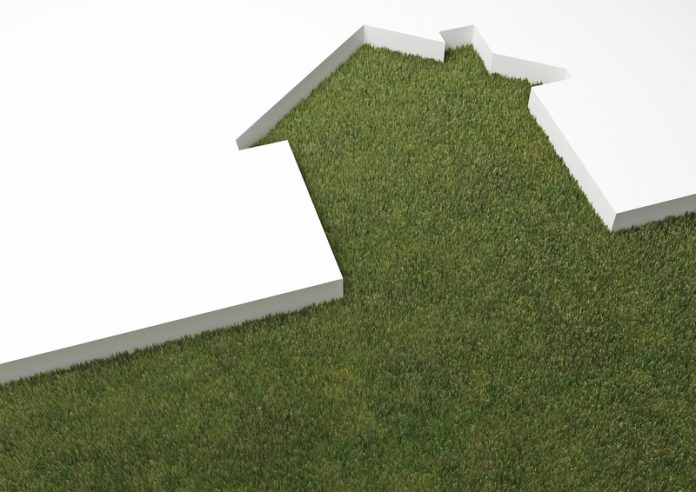Reconomy’s Richard Walker shares the value of environmentally friendly construction and why everyone should continue to push the green agenda
Did you know that the planet could reach its capacity in regards to its global consumption of oil within the next two decades? However, demand continually appears to rise as the global production of oil decreases. In light of this, the construction industry still requires most of its energy sources from oil-based fuels.
In the construction sector of the Western world, many businesses are reliant on cheap crude oil that can be used in processes that help to build with the machines that they use. Surprisingly, within the UK, 50% of all carbon emissions produced by machinery and production are accounted for by the construction industry.
There has been a shift in attitudes though, with increasing awareness that pollution is having a long-term effect on the planet. For instance, this is evident in that by passing legislation, the UK government is now instructing firms to use green processes when constructing a new house or building. Post-construction, firms are also encouraged to incorporate green technologies within the build to benefit the environment once construction is complete.
With estimated revenues for eco-friendly construction amounting to $245 billion across the US in the past year alone, it goes without saying that relevant companies in the UK should be considering this lucrative new opportunity within construction themselves.
To go about achieving this, Reconomy, a specialist in waste management solutions for recyclable materials and skips for hire, has answered the main questions surrounding environmentally friendly construction in this handy guide…
Which eco-friendly construction techniques can I use?
Before you begin construction, consider these three points to ensure a structure that you’re working on will be ecologically beneficial to the environment:
1. Establish whether materials have been locally sourced or if they’re renewed; if they aren’t, can they be recycled in the future?
2. During construction is any energy being wasted? Machines can often be overused during the production process, which leads to expendable energy that is wasted and can never be used again. Electric vehicles and machines with hybrid-engines should be used so that when a motor is being overworked – an electric engine can be engaged to cope with the load.
3. Finally, once building the structure is complete, is there any energy generated within it that is wasted?
Also, take note that both during and following the construction of roofing, recycled paper can be used for insulation. Insulation materials are often expensive. By using a cheaper and practical alternative, the cost of producing insulation for one roof will be minimised drastically by using already existing materials. Furthermore, timbers sourced from sustainably managed forests in the local area can also be used. As well as reclaimed wood, this is an alternative to chopping down trees that are used within construction.
How do I go about designing ecological structures?
There are numerous energy efficient practices and eco-friendly technologies that can be used when designing a proposed structure. These can include:
- Solar energy panels. To generate electricity within a building, or domestically to power boilers and other electrical equipment, solar energy is fast become a cheaper alternative to other forms of domestic power.
- Drainage systems and water filtration. With these systems in place, water can be re-used when biological waste is treated safely, which can then be recycled. Rainwater can also be collected in specific drains and storage taps, as opposed to always relying on water from a tap.
- Low-energy lighting. Accounting for an energy saving of 100%, low energy lighting lasts twice as long as a regular lightbulb.
Why will eco-friendly construction be beneficial to me and my business?
A total of 80% of a building’s entire running costs can be associated to the operating and maintenance of the structure during its lifetime. Green initiatives reduce the total running costs of a building by one third, which amounts to around 53.3% of a building’s running costs.
Consider the fact that the costs of artificial lighting can be brought down by factoring in daylight into the design of a building. The ‘indoor environment quality’ of a building can also be improved when daylight can shine through a building, which benefits the health of all of the occupants that are present in the building.
Once you begin constructing a building, think about using materials that are recyclable and long-lasting where possible. As a result, fewer new materials will be used within the structure, helping to reduce costs whilst less energy is consumed (from crude oils) in order to produce the structure.
Sources:
http://www.sustainablebuild.co.uk/ecofriendlyconstructionmethodsmaterials.html
http://www.nationwideconstruction.us/eco-friendly-construction-8-advantages-of-green-building/
http://www.inc.com/best-industries/issie-lapowsky/green-construction.html
http://www.sustainablebuild.co.uk/ecofriendlyconstruction.html
http://www.innovationsforthebuiltenvironment.co.uk/
http://www.livingbeyondgreen.com/development-construction/
Richard Walker
Marketing Manager
Reconomy











